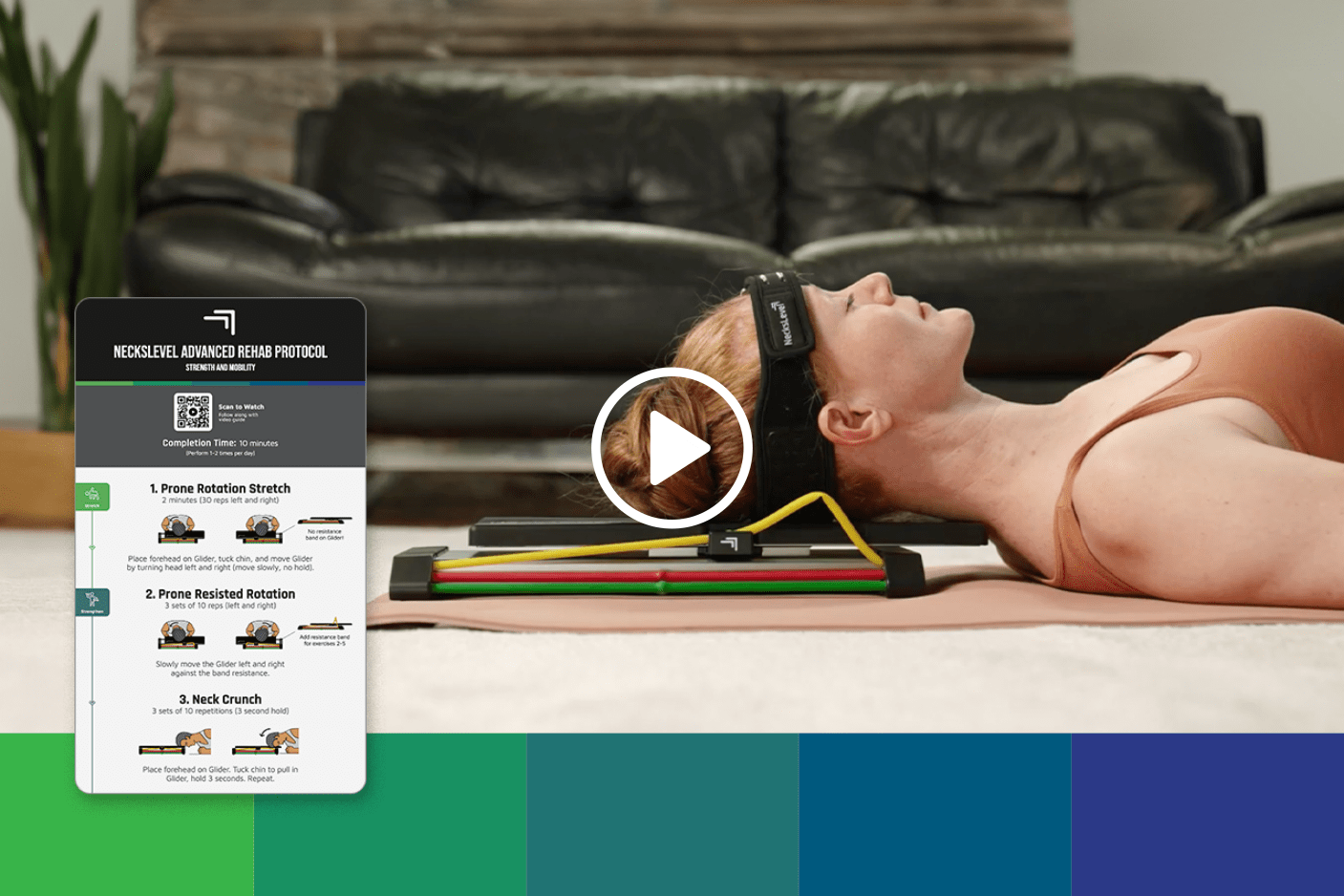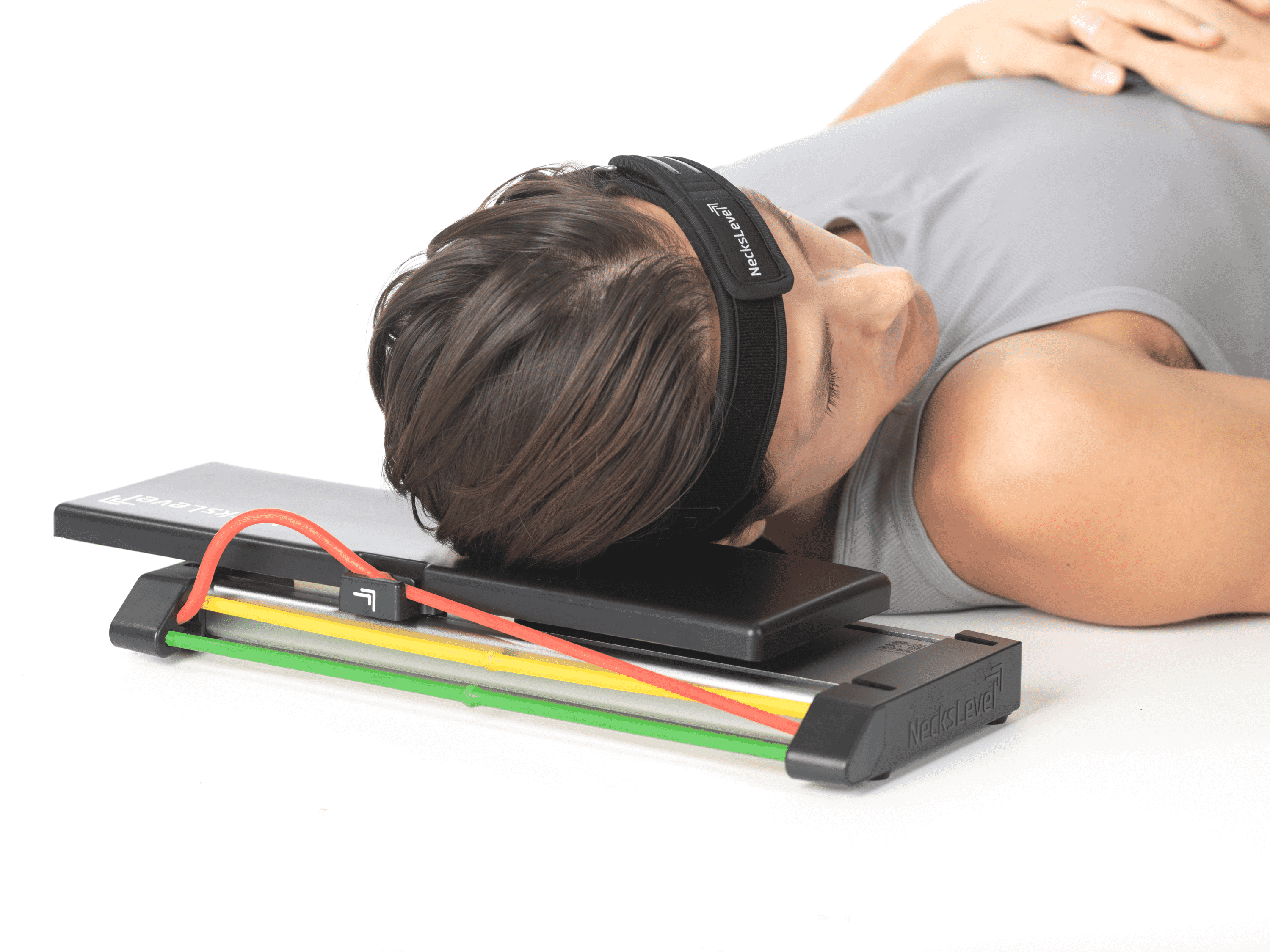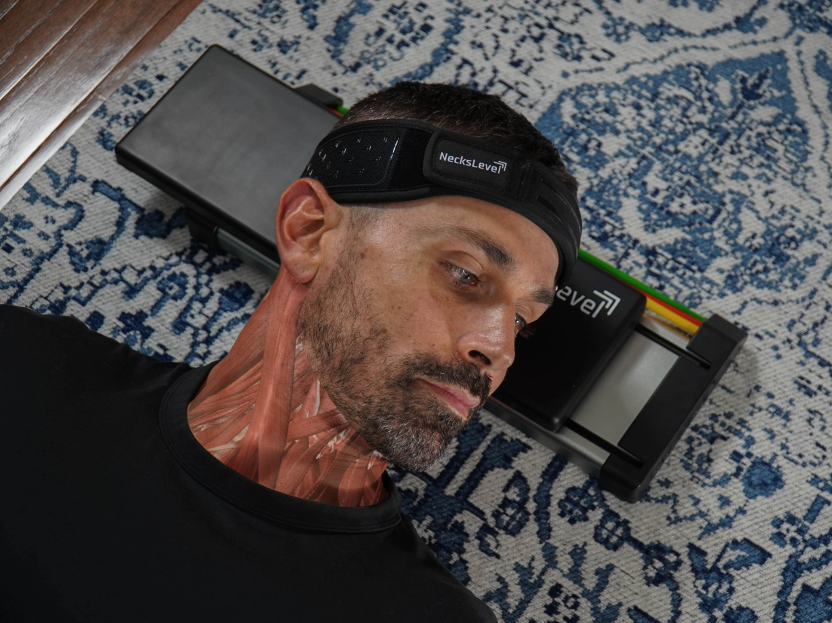How to Fix Bedtime Neck Pain - Pillow and Sleep Setup for Neck Pain

In this guide, we’ll provide sleeping strategies, tips, and tricks to help you achieve restful, pain free sleep while improving your neck alignment.
Neck pain can severely impact your quality of sleep, leaving you feeling fatigued and frustrated. Did you know that your sleeping setup (especially your pillow and position) plays a crucial role in maintaining neck health?
Why Pillow Choice Matters for Neck Pain Relief
Selecting the right pillow is the foundation of good sleep posture. While there’s no “one size fits all” pillow, the main focus should be on pillow height rather than material or shape. A pillow that aligns your neck and spine can help alleviate pain and prevent stiffness.
Tips for Pillow Selection:
1. Evaluate Pillow Height: A pillow that’s too high or too low can strain your neck.
2. Look for Adjustable Pillows: Some pillows come with removable filling, allowing you to customize the height and firmness to your preference.
3. Fill the Gaps: Try a rolled towel or neck roll inside your pillowcase to provide additional support.
4. Tailor to Your Position: Different sleeping positions require specific pillow heights (explained below).

In this guide, we’ll provide sleeping strategies, tips, and tricks to help you achieve restful, pain free sleep while improving your neck alignment.
Neck pain can severely impact your quality of sleep, leaving you feeling fatigued and frustrated. Did you know that your sleeping setup (especially your pillow and sleep position) can play a crucial role in avoiding neck pain?
Maintaining Proper Sleeping Alignment for Neck Health
Proper alignment during sleep is just as important as good posture during the day. Your head, neck, and spine should form a straight line to minimize strain when you are resting at night.
Key Points for Alignment:
Keep your neck in a natural position by keeping your head aligned with your spine.
Use tools like a phone camera or your partner to help check your sleeping alignment.

Best Sleeping Positions for Neck Pain Relief
1. Side Sleeping (50%+ of Sleepers)
Side sleeping requires extra attention to pillow height to fill the gap between your shoulder and neck. It is common for your pillow to be too low!
Use a taller pillow or even two stacked pillows for support; you want to ensure that your head and neck are aligned with your spine

Add a slight chin tuck to maintain a neutral spine and avoid slumping forward.

Pro Tip: Place a rolled towel or neck roll in your pillowcase near your shoulders for extra support.
2. Back Sleeping (30% of Sleepers)
Back sleepers should focus on using a medium to low-height pillow to avoid pushing the head forward.
Consider adding a U-shaped pillow or towel roll for additional neck stabilization.
-
For soft mattresses, use a lower pillow. For firm mattresses, opt for a medium-height pillow.
Pro Tip: Avoid turning your head to one side while sleeping on your back, as this can increase tension and strain on your neck muscles. Additionally, this position can sometimes lead to waking up with headaches, particularly if your neck is not properly supported.

3. Stomach Sleeping (10% or Fewer Sleepers)
Stomach sleeping is the least recommended position for neck pain, as it requires significant neck rotation.
Use a single low-height pillow to reduce overextending your neck.
Place your head at the edge of the pillow to minimize the amount of head rotation.
-
Gradually transition to side or back sleeping for better neck alignment.

Why Sleeping Position and Pillow Height Matter for Neck Pain
Your head weighs approximately 15 pounds, and your neck supports it all day. Improper alignment during sleep can add unnecessary strain leading to pain, stiffness, and even chronic issues.
The right sleeping setup allows your neck to rest and recover, promoting better health and improved sleep quality.
Extra Tip: Heat Your Neck Before Bed
Applying heat to your neck for 10-15 minutes before bed can help relax tight muscles and improve blood circulation, making it easier to fall asleep comfortably. Use a warm towel, heating pad, or a warm water bottle to gently soothe any tension.
Always ensure that you have a protective layer over the heated source to prevent burns and maintain a comfortable temperature. This simple practice can enhance your overall sleep quality and reduce the likelihood of waking up with neck pain or stiffness.

A Quick Checklist for Neck Pain-Free Sleep
1. Use the correct pillow height for your sleeping position.
2. Keep your head, neck, and spine aligned in a straight line.
3. Avoid multiple pillows unless absolutely necessary.
4. Incorporate a towel roll or neck roll into your setup for additional support.
5. Transition away from stomach sleeping if possible.
6. Use your NecksLevel Glide before bed
Watch Our Full Guide: Putting Neck Pain To Rest
For a step-by-step walkthrough, check out our YouTube video covering the best sleeping position and tips to fix neck pain.
Achieve Restful, Pain-Free Sleep
Your sleep setup plays a critical role in neck health. By following these strategies, you can optimize your pillow, alignment, and sleeping position to wake up refreshed and pain-free.
Ready to improve your sleep and neck health? Start adjusting your sleeping setup tonight for better results.
FAQs - Desk Setup for Neck Pain
How do I know if my pillow is the right height for my sleeping position?
To check if your pillow is the right height, ensure your head and neck are aligned with your spine when lying down. For side sleepers, your pillow should fill the gap between your neck and shoulder. For back sleepers, a medium to low-height pillow is ideal. Use a phone or ask someone to check your alignment.
What is the best sleeping position for neck pain relief?
Side and back sleeping are the most recommended positions. Side sleepers should use a taller pillow to keep the neck aligned, while back sleepers should use a medium-height pillow to avoid pushing the head forward. Stomach sleeping is generally discouraged as it strains the neck.
Will using the NecksLevel Glide help with sleep-related neck pain?
Yes! The NecksLevel Glide strengthens and stretches your neck muscles, helping alleviate tension and stiffness caused by poor posture or alignment during sleep. Using it before bed can promote relaxation and better alignment.
What are some signs that my pillow or sleeping setup is causing neck pain?
Waking up with a stiff neck, headaches, or shoulder discomfort can indicate an improper pillow height or poor sleeping alignment. Adjust your pillow and position to see if symptoms improve.
Is there a downloadable guide for these sleep tips?
Written by:

Dr. Niya Gray, DPT, LSVT BIG
Physical Therapist
Niya is a Physical Therapist and Marketing Manager with a passion for health solutions and patient outcomes, focused on bridging the gap in access, quality, and innovation in healthcare. With a keen interest in the digital space, she seeks to drive healthcare forward by leveraging technology, creative advancements, and digital platforms to enhance patient care and improve healthcare accessibility.
NecksLevel Glide
"Like having a Physical Therapist in your home"
Professional neck strengthening and stretching in one compact device. Relieve neck pain while reducing neck stiffness & improving your posture.
SHOP NOW

Related Resources:








